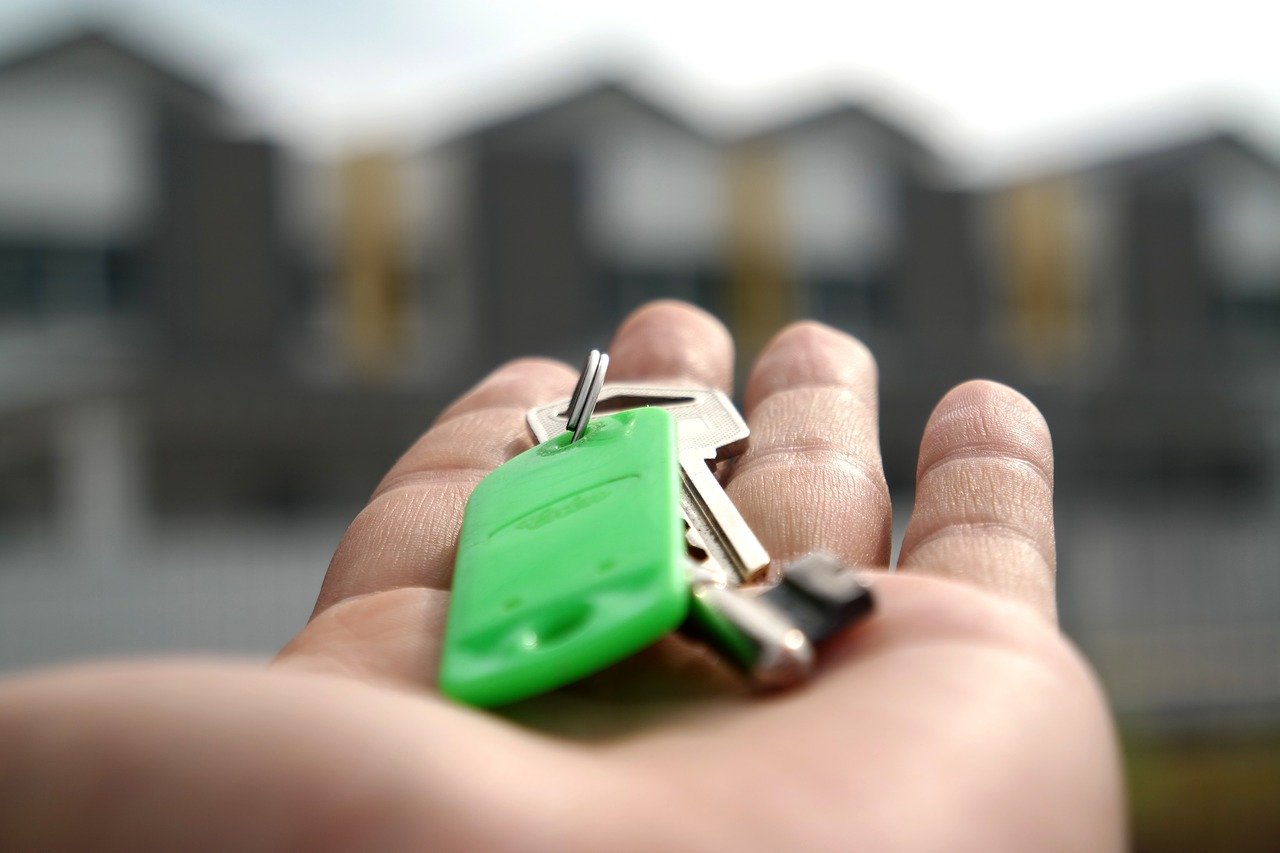There are many pitfalls in renting out an apartment. These tips will help you to avoid them

How to rent out an apartment: 7 steps explained. Source: pixabay.com
Many of us have a property that is spare all or most of the time. Renting it out may become a great source of a stable passive income, especially if you own an apartment in a place full of tourist attractions. Moreover, any settlement has plenty of young families, students, or travelers on a business trip who would prefer the comfort of a home to hotels or dormitories.
From filing returns to determining qualifying deductions and property depreciation schedules, being a tax preparer requires plenty of specialized knowledge to guide you through your everyday duties. Fortunately for the current state of the tax preparation industry, it is inundated with an ever-expanding collection of helpful digital tools designed to streamline your workflow and optimize all of the inevitable number-crunching operations on your task list. For current or aspiring tax preparers, we’ve crafted a list of the 5 tools every tax preparer needs before tax season comes around.
There are many pitfalls in renting out an apartment. Yet you can avoid them if you follow a simple plan.
7 steps to rent out an apartment
1. Determine the price
Knowing how much to charge for rent is a very crucial step. Ideally, your income from renting out should exceed your expenses. Calculate all the possible monthly expenditures related to your property such as mortgage payments, taxes, utilities, maintenance and repairs, insurance, etc. Then check out similar local offers. Don’t forget that your apartment rent price should be not only profitable but also competitive. If you wish to charge more than your competitors, make sure to provide better housing quality and additional amenities.
2. Prepare your property
Dedicate some time to cleaning the apartment, and invest in home improvements before you put your apartment on the market. Make sure appliances, WI-FI, sockets and locks are working and are in good condition. Stock some new linen, towels, etc. if you are going to allow short-term rentals. Take photos of the condition of your rental home before the tenant moves in. When the lease is over, you may need to be able to prove that any damage done to the place did not exist before.
3. Make it legal
Most countries and states have specific landlord-tenant laws that cover issues such as security deposits, property access, and notice periods for ending a lease. Learn about them or consult with a professional. There may also be federal laws around housing safety and anti-discrimination laws. These often protect renters while they’re apartment hunting, so be sure not to cross the line. Knowing the laws, you can now get down to the lease contract.
4. Prepare a lease agreement
There are many basic free templates found online. You can edit them to add your specific terms such as pet allowance, contacts of the property management company or individual, whether or not your tenant can sublet the apartment, penalties for breaking a lease and conditions of opting-out earlier than the contract ends.
The contract usually consists of a few common sections:
- Landlord and Tenant Information: In this first section, include the date of the lease signature, the names of the landlord and the tenant(s).
- Property Description: Include the legal property description or sketch of the property as well as the physical address.
- Rent Due Dates: Here you can specify the rent amount. Provide the specific date of each month that the rent is due. Additionally, provide the number of days after the rent is due that a late fee will be charged. This section may also include the early termination conditions.
- Payment information: Provide the address to where the lease payments are to be sent each month. This should be the full address, including the city, state, and zip code. Additionally, include the fee amount.
- Specify which payment methods are acceptable. For instance, certified check, cashier’s check, money order, and online payments are considered safer than credit card payments or cash.
- There are many online rental payment sites such as ERentPayment, RentMatic, and RentMerchant. P2P online payments platforms, like Venmo or Zelle can get handy too. If you are advertising your property on the sharing platforms like Airbnb or Booking.com, let the organizations handle your payments.
- Insurance: Specify which type of insurance and taxes (if any) the tenant must pay to remain in good standing with the landlord.
- Disclosures: By law, landlords must disclose certain information about their rental properties to prospective tenants. All renters have the legal right to know about certain conditions and history of the property they are about to rent. Most disclosures center on issues that can affect the health and safety of occupants. For instance, indicate whether or not there is lead-based paint or asbestos on the property based on inspection.
There are some other common landlord disclosures required by most US states.
Tenants’ rights to a move-in checklist that gives tenants the opportunity to note any damage they find in the unit that was there prior to them moving in.
- Information concerning the security deposit.
- Information regarding rates for shared utilities.
- Nonrefundable fees.
- Disclosure about who is responsible for maintaining smoke alarms.
- Notice of sex offenders in the neighborhood.
- Bed bugs found in the unit or adjacent units within the previous year.
- Smoking policy.
- Whether the property is under foreclosure.
- Death in the unit within the previous three years. You must also disclose how the person died, whether from natural causes, suicide, or homicide.
- Presence of environmental hazards.
- Intent to change the nature of the property.
- Right to be present at the inspection.
- Flood damages prior to the tenancy.
- Copy of the state’s landlord-tenant code.
- Pets: Indicate whether or not pets are allowed on the property. If so, indicate the number of pets allowed, and which kind. State how much the deposit is to house pets in the apartment. Take a look at how these apartments for rent in Garland on how they do their pet policies.
- Notices: This section provides both the tenant and the landlord an official address of where notices are to be sent. (including city, state, and zip code).
- Signatures: Both sides should sign the document to illustrate their free will to follow the agreement terms.
5. Advertise
Once you find the website or platform you’d like to advertise your apartment on, write a witty description. According to RentalsOnline.com, words and adjectives that’ll help you get a renter include: “granite,” “state-of-the-art,” “stainless steel appliances,” “vaulted ceilings,” “maple,” “gourmet,” and “hardwood floors.” Consider staging the rental and getting professional photography done to make it look its best. If you are going to take pictures by yourself, at least, make sure they are detailed and high-resolution.
Some great websites to consider for listing your property include:
- Hotpads. A feature-rich US-based site that shows you a map view including Google Street View.
- Craigslist offers numerous listings through its local sites worldwide. Property owners and agents can opt to post location maps and photo and video tours of the apartment.
- ForRent. Beyond a detailed overview of property features such as pet policies and proximity to shopping, you get a photo gallery, videos, and floorplans with many listings. The website features many articles with advice for landlords and tenants.
- Padmapper. It maps apartments in a chosen city of the US or Canada allowing to set criteria (for instance, minimum or maximum rent, whether pets are allowed, and whether the lease is long term or short term). The service also features listings from other platforms like Airbnb or Craigslist.
- Walk Score. It gives visitors a map of your chosen area and assigns it a score based on its “walkability” meaning access to grocery stores, hospitals, and parks. A location with a high walkability score can help tenants save money on commuting and shopping.
- HomeAway. It’s a major vacation rental marketplace with more than 2,000,000 vacation rentals in 190 countries listed on its website.
- FlipKey. It is a TripAdvisor company that powers the vacation rental experience on TripAdvisor globally.
6. Choose a tenant
You need to be able to depend on this person not only to pay the rent on time but also to keep your home in good condition. Don’t forget to gather references for potential tenants and check their credit histories. You can ask potential tenants to fill out an application form with the following information: full name, employment (including current and previous ones), salary, and references. Then you can contact the employer to check the stability of their income, etc. Once you’ve found the right tenant, ask for a reasonable security deposit, and arrange an appropriate payment schedule.
7. Protect the security deposit
You will legally owe your renter their security deposit refund at the end of the lease, so put it in a separate account where it’s safe.
SEE ALSO:









